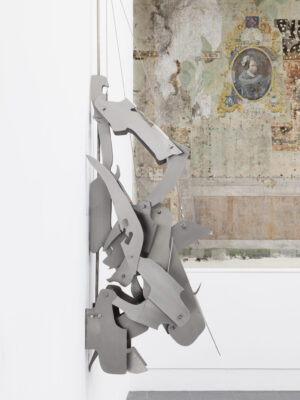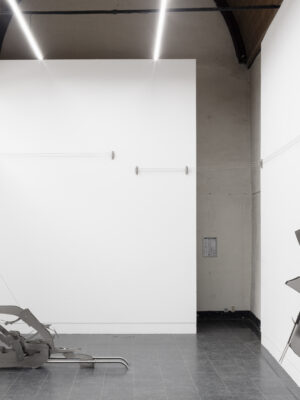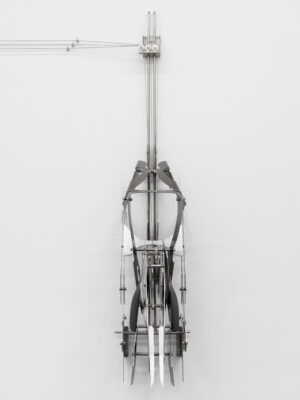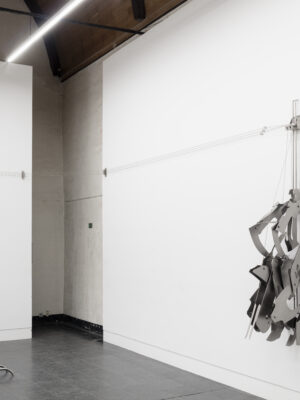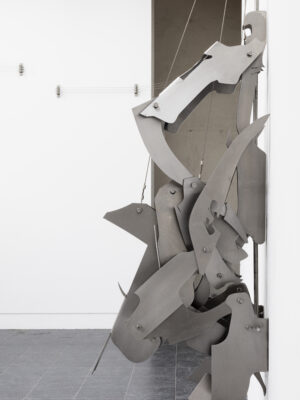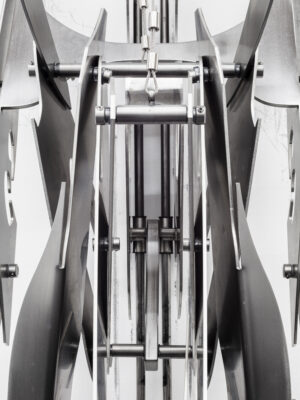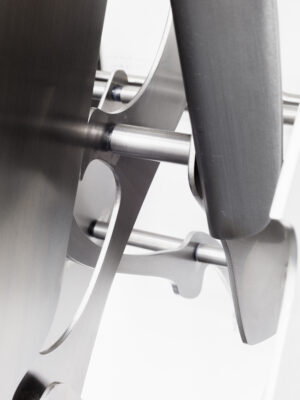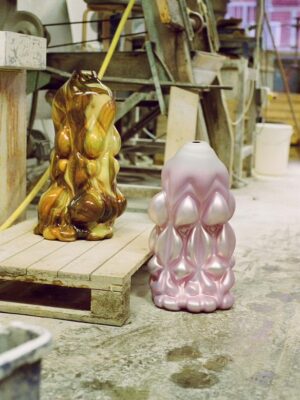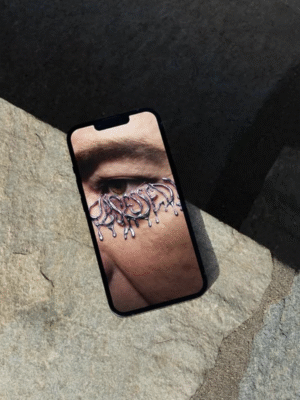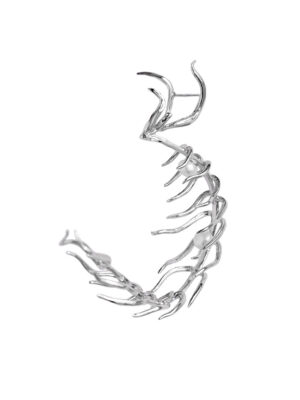In Vermin, Andriessen explores the violent rites and dehumanisation that marked the lead-up to the Beeldenstorm of 1566, a period of religious turmoil and poverty in the Low Countries, now known as Belgium and the Netherlands. Developed specifically for Kunsthal Gent in Belgium, her mechanical sculptures evoke systems of control, submission and resistance, confronting viewers with the haunting presence of ritualised violence. Vermin invites reflection on how violence becomes sacred, and how fear has long been used to enforce obedience.
During the 16th century in reformed France and the Low Countries, people with different beliefs were called heretics, and even vermin. ‘Vermin’ derives from the Latin vermis (worm) and was originally used for worm-like larvae of certain insects that would spread diseases, many of which infest foodstuffs. The mobs that took part were not just acting out of anger or chaos; they were performing a ritualistic act of religious purification. By using terms such as ‘vermin’ or ‘plagues,’ the catholic church developed a narrative in which heretics were seen as dangerous, undesirable elements that had to be eradicated. This rhetoric contributed to the justification of harsh measures such as excommunication, imprisonment, torture and execution, to control and ‘cleanse’ or ‘purify’ the community.
‘These new sculptures form a landscape of armoured carcasses acting out their own agency, making tangible the growing darkness residing in current socio-politics.’
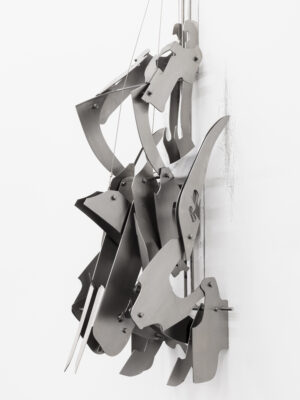
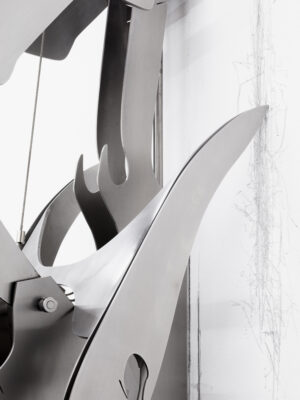
An important anchor for Andriessen’s exhibition is The Rites of Violence, an essay by Natalie Zemon Davis, that examines how acts of violence have been framed as sacred or ritualistic under certain periods, such as during religious wars, inquisitions, or the use of terror by religious authorities in order to instill fear and obedience. The political assassinations, which were often carried out in highly ritualised ways, display how public executions were not just acts of violence, but also of symbolic meaning. Through this exhibition Andriessen makes a reference to the way how these ritual acts were used as a tool to increase power, legitimacy, and authority, while also considering how political and social contexts shaped people’s understanding of violence and justice.
A notorious instrument of terror deriving from the Spanish Inquisition during this time was the Council of Blood (or ‘Bloedraad’), which was a court set up to investigate and punish those suspected of rebellion or heresy. Mass executions were common, and those found guilty were often beheaded, burned alive, or hanged in public squares during religious rites or celebrations as a warning to others. The executions were brutal and public, using fear and spectacle to deter further rebellion and dissent. Doing so the ritualisation of violence became a form of collective action, often with clear social or religious purposes.
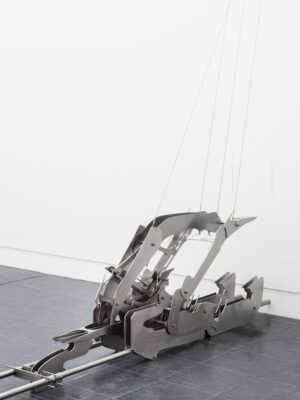
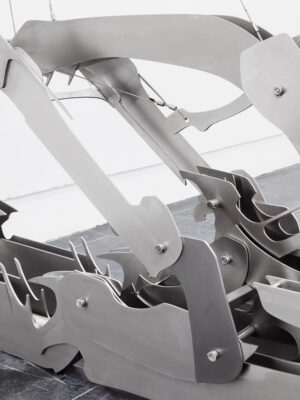
For Vermin Andriessen dedicated her investigation to medieval armour and Western European torture techniques used to carry out oppression, destruction and mutilation. She not only addresses the periodic geopolitical tensions, but also how they give way to resilience and community mobilisation. The works can be seen as activist entities that together perform an unpredictable and uncanny choreography.
The viewer becomes the eyewitness to a rite that increasingly affects the space over the duration of the exhibition. These new sculptures form a landscape of armoured carcasses acting out their own agency, making tangible the growing darkness residing in current socio-politics.
Location: Kunsthal Gent, Ghent, Belgium
Dates: On view until 4 May 2025
Opening Hours: Saturday & Sunday, 11:00–18:00
Artist: isabelle_andriessen
Photo credits: michieldecleene
More information about Kunsthal Gent and its current and upcoming exhibitions can be found on the Kunsthal Gent website.
ᴅᴀᴢᴢʟᴇᴅ is an editorial series of posts featuring new collections and works by established artists in jewellery, craft, and design, handpicked by Current Obsession. Do you have a new collection or a new body of work that’s simply dazzling? We want to hear from you! And remember, there’s no deadline – we welcome submissions throughout the whole year!
Every submission is a potential gem, and our team takes great care in handpicking projects that resonate with the contemporary scene. To submit your work, just email high-resolution images (5-10 pcs), image credentials, social media tag, work description (max 250 words), and artist bio (max 250 words) to veronika@current-obsession.com.
